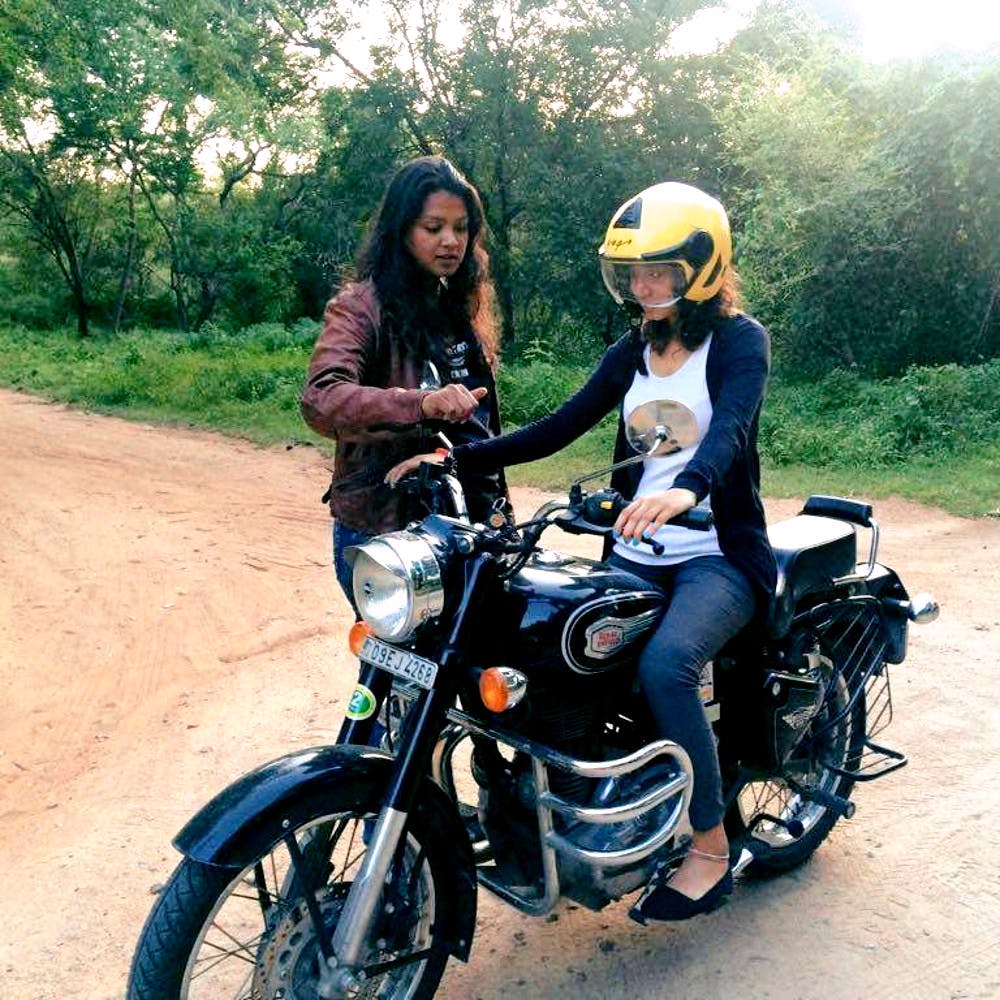Step 1: Know Your Scooter
If it hasn’t been stressed enough, Know Thyself and your scooter. A scooter is, after all, a machine, and you have to know at least the very basics of it. Therefore, get familiar with the driving basics before you take the scooter out into the real-world scenario.
So what defines scooters? The exclusion of gears. And how to start it? Press the rear brake on the left and then clasp the self-start button on the right side. On certain occasions, when the engine has been left unattended for a long time or in winter mornings when the cold has taken a toll on the engine, it is advisable to kick-start the scooter after double-standing it.
After the start-up, make sure to press onto the rear brake firmly until you have decided to move because otherwise, the scooter is likely to move forward on its own. Much like a bicycle, the handlebars also include the front and rear brakes. And it is essential to know which one is which – in all cases, the left brake level attends to the rear wheel, whereas the right handlebar brake is connected to the front brake. Additionally, the right handlebar holds the self-start switch (made compulsory in all scooters now) and accelerator. You are now familiar with the first step on driving a scooty.
Step 2: Baby Steps – Getting a Comfortable Sitting Posture and Firing-up the Engine
Moving on to the next step, sitting correctly and comfortably on the saddle and starting the engine, as directed in the previous point, clutching the left brake and pressing the self-start button on the right handlebar. Scooters attend to people in general, disregarding their age and height. So anyone can easily sit on the seat in an upright or leaning position, as per their choice. The seat height is easy to access and helps maneuver the stop-and-go traffic of Indian roads. However, leaning too much forward or positioning yourself more to the left or right will hinder the driving experience. You might end up falling from the vehicle or, worse, injuring yourself and your fellow drivers/passer-by. How to drive a scooty includes these small but crucial details.
Another thing to most definitely have in your possession is a helmet. Now, wearing a helmet has become a must, and therefore, no matter how deserted the road is, you should always wear a helmet while riding a scooter. And the same can be said for bikes. With this little reminder, you can save yourself from unnecessary harassment of traffic police and ensure your own safety.
Step 3: Take Off
Riding is the best part. And no matter how much you fear to counter gravity with balancing, once you get used to it, this third phase will tempt you the most on this step-by-step guide to how to drive a scooty. Now for the first-timers, let’s clear a slight misconception. It is better to ride on smooth pavements than on rough terrains, i.e., grounds and fields. Taking off includes a combination of three simultaneous activities – gradually lighten your grip on the rear brake, twist the accelerator towards yourself, and lift your feet from the ground to the footboard. It is a point to be noted that constantly stay in motion because it is easy to ride at high speed than at a low, wobbly pace.
The scooter’s accelerator is sensitive; before you know it, it will gain a decent speed of 30-40 kmph. For beginners, this is the best speed to stay at, and if the road is without many bends, well, then it’s your lucky day. Remember not to shift from your sitting position constantly and try to get accustomed to the wind, speed, and other vehicles on the road.
Step 4: Brakes Save Lives








